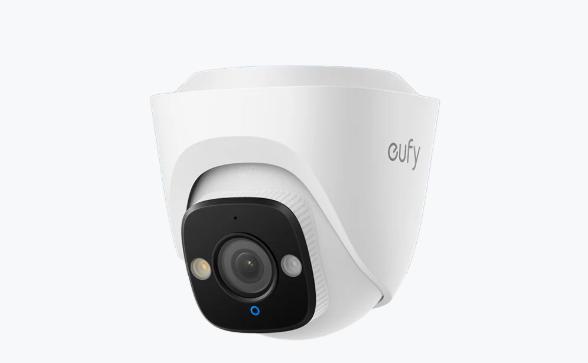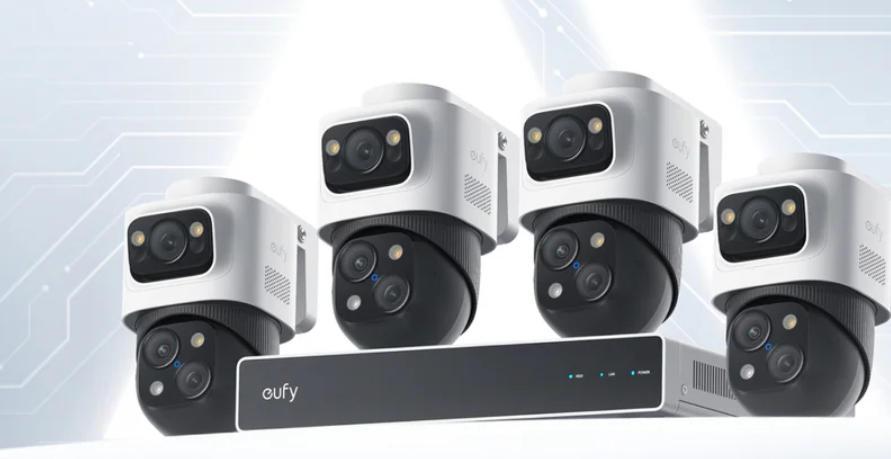Power over Ethernet (PoE) cameras are revolutionizing security surveillance by integrating power and data transmission through a single cable. This innovation simplifies the installation of IP surveillance systems, making them more user-friendly and efficient. PoE cameras eliminate the need for separate power supplies, offering a streamlined solution for various security needs. By understanding their operation, benefits, and setup, users can make informed decisions about incorporating PoE technology into their security infrastructure for enhanced safety and convenience.
What Is A PoE Camera?
Definition And PoE Meaning
A POE camera is a type of IP camera that receives both data and electrical power over a single Ethernet cable. “PoE” stands for Power over Ethernet, a technology that enables this dual function. This eliminates the need for separate power cables, creating an efficient setup that simplifies deployment. PoE cameras are increasingly popular due to their ability to deliver high-quality video streams with minimal wiring, making them ideal for modern surveillance systems.
How PoE Combines Power And Data
PoE technology allows for the transmission of power and data over an Ethernet cable by utilizing different conductors within the cable for each function. This is achieved through PoE switches or injectors, which supply power while allowing data to travel freely. The integration facilitates quicker installations and reduced costs, as fewer cables are involved. This seamless combination ensures PoE cameras operate continuously with a steady power supply and robust data transfer.
Role Within IP Surveillance Systems
PoE cameras are integral to IP surveillance systems due to their ability to provide high-resolution video feeds and flexible installation options. They connect directly to network video recorders (NVRs) or a cloud-based storage system, allowing for scalable security setups. These cameras are suitable for both small and large-scale deployments, supporting various surveillance applications, including remote monitoring and real-time alerts, enhancing overall security measures.
How Does A PoE Camera Work?
Power Sourcing Equipment and Power Delivery
PoE systems rely on devices known as Power Sourcing Equipment (PSE), which are typically PoE switches or injectors. These devices manage power delivery to the connected cameras, ensuring a consistent energy supply. The PSE sends electrical power along with data over the Ethernet cable to the PoE camera, which receives and utilizes this power to function effectively. This setup facilitates robust and reliable camera operation without the need for additional power sources.
Data Transmission Over Ethernet Cable
Data from a PoE camera travels alongside power through the same Ethernet cable, maintaining high-speed transmission while minimizing latency. The standard Ethernet cables, such as Cat5e, Cat6, or Cat6a, enable fast and reliable data transfer. These cables handle large volumes of data, making them suitable for high-definition video streams. This ensures clear, uninterrupted footage for monitoring and recording purposes, essential for security applications.
Signal Negotiation And Standards
PoE cameras adhere to specific standards, such as IEEE 802.3af/at/bt, to ensure compatibility between devices and safe power levels. Signal negotiation ensures the correct power output to each connected device, preventing overloads. These standards enable interoperability between different PoE equipment brands, ensuring flexibility and ease of implementation. The devices negotiate the power requirements prior to powering up to guarantee security and reliability in energy distribution.
Benefits of PoE Cameras
Simplified Installation and Reduced Wiring
Installing PoE cameras is straightforward due to the single-cable solution for power and data. This reduces the complexity typically associated with security camera installations, minimizing the amount of wiring required. Without the need for separate electrical wiring, these systems become cost-effective and less disruptive. The ease of installation provides a significant advantage for users seeking quick and clean surveillance system setups.

Reliability, Scalability and Central Power Management
PoE cameras offer enhanced reliability with centralized power management through PoE switches. This setup allows for easy monitoring and control of the power supply, aiding in swift troubleshooting. Additionally, PoE systems are highly scalable, capable of supporting numerous cameras within a network. New cameras can easily be added without altering the existing infrastructure, making PoE systems a future-proof choice for growing security needs.
Cost Efficiency And Maintenance Ease
The reduced need for electrical outlets and cables lowers the initial installation and long-term maintenance costs associated with PoE cameras. The network’s centralized nature simplifies updates and system checks, making routine maintenance straightforward. With less physical infrastructure, these systems also reduce potential points of failure, further diminishing operational costs over time. The efficient use of resources makes PoE an economically sound security option.
Types Of PoE Camera Setup And Use Cases
Typical Hardware Components
A complete PoE camera setup involves essential hardware, including PoE switches or PoE injectors, network video recorders (NVRs), reliable Ethernet cables, and, of course, the PoE cameras themselves. These components work in tandem to facilitate smooth operation, ensuring that both power and data requirements are met. High-quality equipment is crucial for a dependable and efficient PoE camera system tailored to specific security needs.
Common Camera Deployment Scenarios
PoE cameras excel in various environments, both indoor and outdoor. In homes, they offer reliable monitoring for safety and peace of mind. Businesses use them for perimeter security and to oversee day-to-day operations. They withstand various weather conditions, making them suitable for outdoor surveillance. Their versatility means they can be deployed in any location where a reliable and straightforward surveillance solution is needed.
Comparison With Wi‑Fi And Analog Cameras
Compared to Wi-Fi cameras, PoE cameras offer more reliable connections without interference from wireless signals. They provide consistent power and data flow, which is essential for continuous operation. Unlike analog cameras that require separate power sources and a DVR, PoE cameras integrate seamlessly into network-based systems, offering advanced features like remote access and high-definition video capture, elevating security capabilities.
Choosing and Setting Up A PoE Camera System
Key Specs To Consider
Choosing a suitable PoE camera system involves evaluating key specifications such as the type of Ethernet cable (Cat5e, Cat6), power budget requirements, camera resolution, and number of available ports on the PoE switch. These considerations ensure that the system aligns with specific surveillance needs and operates efficiently. Focusing on these aspects aids in building a robust and effective security infrastructure.
Set Up Steps And Best Practices
Begin by planning the camera placement and gathering all necessary equipment, such as cables and mounting tools. Connect the PoE cameras to a PoE switch and then link the switch to an NVR or computer for recording. Ensure firmware updates are performed, and configure the cameras to the preferred settings. Regularly monitor the system for optimal performance, following best practices for maintenance and updates.
Avoiding Common Pitfalls
To ensure a successful PoE camera system establishment, avoid common pitfalls like inadequate power budgeting or incorrect cable selection. Ensure the PoE switch’s power capacity matches the power needs of all connected cameras. Using subpar or incompatible components can lead to poor performance; therefore, adhere to standards and compatibility guidelines. Proper planning and component choice reduce potential operational issues.
Conclusion
PoE cameras provide a highly efficient and innovative solution for modern surveillance needs by combining data and power transmission, simplifying installation, and reducing costs. These systems offer reliability, scalability, and ease of maintenance, making them an optimal choice for a range of security applications. By carefully selecting the right components and following best practices for setup and maintenance, users can deploy a robust PoE security system that ensures peace of mind and enhanced safety.

